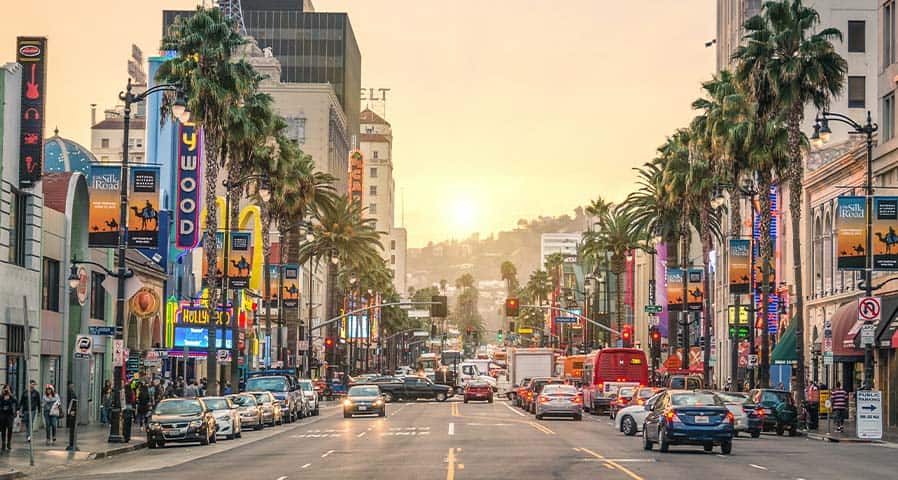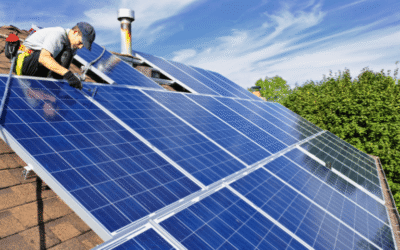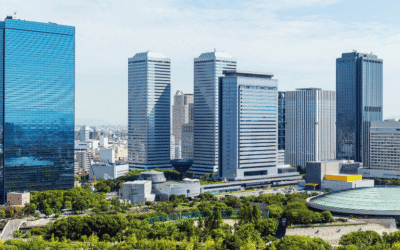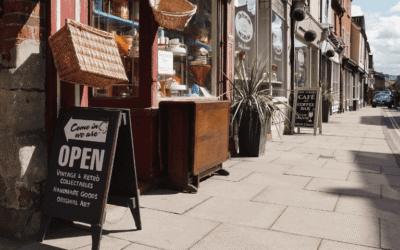The list of requirements in Title 24 can be confusing so we’ve created a detailed summary to help ensure your building meets the state’s energy code.
What is Title 24?
Title 24 lists energy-efficient standards designed to improve efficiency while preserving outdoor and indoor environmental quality. The measures are outlined in the California Code of Regulations and implemented by the California Energy Commission. The commission is responsible for implementing, adopting, and updating energy efficiency codes in buildings.
The measures are enforced by local city and county agencies who ensure building owners and developers are adhering to the energy codes.
Energy codes are not new to California. The state has had standards in place since 1978 to reduce energy costs, lower greenhouse gas emissions, and make buildings more comfortable for occupants.
Why are Energy Standards Updated?
The California Energy Commission is required to update its electrical code standards every three years. The standards must be cost-effective for homeowners over the typical 30-year lifespan of most buildings. The updating is in response to new technology and construction methods that work to improve efficiency.
The standards are set by the California Energy Commission and supported by the Natural Resources Defense Council and the California Building Industry Association. Other environmental groups active in the state also support the energy standards.
What Buildings are Covered Under California’s Title 24
Title 24 covers all new constructions. This includes residential and commercial buildings. Additions and alterations to buildings are also covered under Title 24. However, jails, prisons, and correctional centers are currently exempt from the energy standards.
Energy Standards and Climate Zones
Energy standards can vary depending on the climate zone. Different practices are more effective in various climates. For example, regulations that are cost-effective in extreme climates might be too expensive in milder climates. By separating measures by climate zone, it’s possible to guarantee that a specific building will be outfitted with features that are the most energy-efficient for that area. There are 16 climate zones in California with different energy standards.
Lighting Requirements for California’s Title 24 Codes
Indoor lighting power allowances are reduced by close to 40% for the entire building and 30% in specific areas. Allowances for outdoor lighting power are dropping around 23% in response to energy-efficient LED bulbs and fixtures.
Power adjustment factors (PAF) are available. These adjustments can offset the wattage in areas while still being in compliance. Building developers are being encouraged to use horizontal slats and light shelves to improve efficiency.
Here’s a look at the precise lighting requirements for California buildings.
Action Services Group has over 32 years of experience in energy efficient lighting solutions, including LED Retrofits, Next Gen LED, as well as Lighting Control Solutions. If your organization needs assistance in California or anywhere in the U.S., we are here to assist.
Luminaire Classification and Power
Luminaires in California buildings are required to have both the wattage and classification labeled on the product. This includes placing the maximum wattage on a permanent label.
Independent Manual Controls
California’s Title 24 has specific requirements for lighting manual lighting controls and their placement. All rooms must have manual switches for lighting, outfitted with on-and-off functionality. There are a few exceptions to this standard which include:
- Arenas
- Auditoriums
- Malls
- Retail sales areas
- Wholesale showrooms
- Convention centers
- Work and storage areas in commercial and industrial buildings
- Psychiatric areas in healthcare facilities
By keeping the lighting on individual/manual controls, businesses can illuminate specific areas and leave other spaces dark resulting in a reduction of the building’s total energy consumption.
Multilevel Lighting Controls
Several aspects of Title 24 regulate multilevel lighting. The energy standards require controls on all multilevel lights that can reduce lighting by a specific amount to make buildings more comfortable and reduce energy consumption.
LEDs and low-voltage incandescent systems must have continuous dimming capabilities that range from 10 – 100%. Fixtures like compact fluorescent lights and track lighting need to have a minimum range of 30-70%.
Surface-mounted and recessed lighting are allowed in the following ranges under Title 24.
- 20-40%
- 50-70%
- 75-100%
- 100% power
The goal of these requirements is to boost energy efficiency using controls that minimize usage. Being able to dim the lights allows businesses to use less energy and fewer resources.
Did you know we have a Lighting Controls Education Center? We cover everything from types of lighting controls, the different categories, strategies and so much more. Click here to visit our Lighting Controls Education Center
Shutoff Controls
Shutoff controls help to reduce lighting in unoccupied spaces. The controls can either sense occupancy or be on automatic timers. Since a single control can only cover around 5,000 sq. ft. or less, multiple controls may be necessary in larger areas like loading docks and parking garages.
The energy standards require these controls to reduce lighting in the building by up to 50%, however, emergency lighting is exempt from Title 24.
Outdoor Lighting
Title 24 specifications for outdoor lighting vary by lighting zone. Lighting zones indicate the amount of light provided by the surrounding environment. For example, street lights. The ratings range from These ratings can range from LZO to LZ3. An LZ0 area is one where there’s a very low level of light in an undeveloped area. LZ3 is used to indicate a high level of light in an urban area.
All outdoor lighting uses the BUG system: backlight, uplight, and glare. The system identifies how well the surrounding light can reduce glare and backlighting to reduce light pollution and minimize energy usage rates. The worst ratings are G5, U5, and B5, compared to optimal ratings of G0, U0, and B0.
Daylight Controls
Title 24 also has requirements for daylighting.
Daylighting involves strategically placing windows and similar openings to allow natural light to illuminate building interiors during the daytime hours. These regulations are separated into three zones, which include skylit zones, primary side-lit zones, and secondary side-lit zones.
Skylit zones use skylights for illumination. These zones are equal to the area the skylight illuminates plus an overall distance of 0.7 times the skylight’s height extending out from the skylight’s edge.
Side-lit zones use light from nearby windows. The zone is equal to one window height deep as well as half the window height on both sides.
Secondary side-lit zones receive some illumination from windows. The zone is equal to two window heights deep as well as one window width plus around half of the window height wide.
Automated daylighting controls are another requirement, however, standards can vary depending on the situation. For example:
- The room comes with 24 square feet or more of glazing
- The room has a total lighting power of at least 120 watts
- Part of the area is in a primary side-lit zone or skylight zone
- The lights offer general lighting as opposed to display or decorative lighting
Daylighting also needs to combine multilevel lighting techniques. This also includes enclosed spaces. When the floor area below a roof is larger than 5,000 square feet and the height of the ceiling is more than 15 feet, 75% or more of the area needs to be positioned in a primary daylit or skylit zone.
PAF credits are available for buildings using modern daylighting systems that include dimming and off controls, clerestory windows, horizontal slats, and light shelves. The credit can be either 5% or 10% depending on which systems you install.
Energy Efficient Lighting Projects from Action Services Group
Due to the precise calculations contained in California’s Title 24, a professional contractor is often required to plan and install your building’s lighting system. Contact Action Services group to learn more about California’s Title 24 or to get started on your energy efficient lighting project. Call 610-558-9773, email [email protected], or schedule a call that fits your needs by clicking the button below.
Reference: Crest Real Estate, LLC. (2023). What is Title 24? https://www.crestrealestate.com/title-24/









































0 Comments